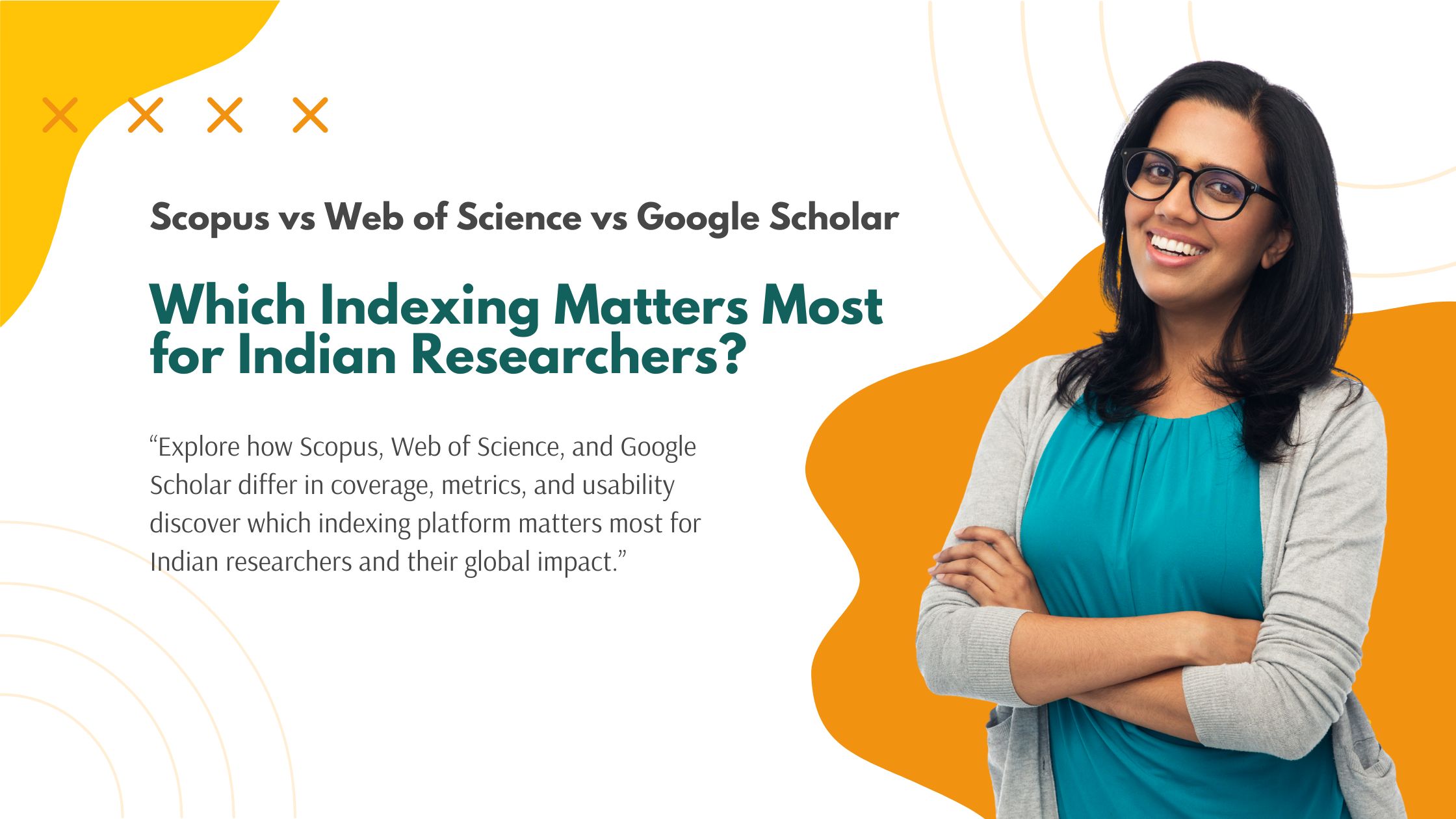Introduction
Contextualize the importance of choosing the right academic database—especially for Indian researchers aiming to maximize visibility, credibility, and impact.
Mention how varying coverage, metrics, accessibility, and regional considerations factor into the decision-making process—drawing on the blog from spubl.kg spubl.kg.
1. Coverage & Inclusiveness
Google Scholar (GS): Offers broad, inclusive indexing—crawling theses, dissertations, conference papers, working papers, books, preprints, and content in multiple languages LSE BlogsNature.
Scopus vs Web of Science (WoS): Both are selective, with both overlapping and unique content: Scopus tends to index more journals, including many that WoS misses MDPIWikipedia+1.
Specific to Indian Journals: The 2011 study found Scopus indexed 298 Indian journals while WoS covered 269; Scopus also had more unique titles and greater overlap with those having impact factors ResearchGate.
2. Metrics & Analysis Tools
Scopus: Offers CiteScore, SJR (SCImago Journal Rank), SNIP—journal-level metrics that help assess impact rigorously spubl.kgWikipedia+1.
Web of Science: Offers Journal Impact Factor (JIF) and robust analytics via JCR, Essential Science Indicators, InCites, etc. Wikipedia.
Google Scholar: No formal journal-level metrics; provides citation counts for articles and author-level data like h-index—but these can include noise and duplicates spubl.kgWikipedia.
3. Usability & Accessibility
Google Scholar: Free, simple UI, widely accessible—ideal for researchers with limited institutional access spubl.kg.
Scopus & WoS: Subscription-based; their interfaces offer advanced analytics but require training to master fully spubl.kg.
4. Regional Relevance & Language Coverage
Google Scholar: Stands out by covering non-English publications and regional academic output—crucial for Indian researchers publishing in local languages or regional journals spubl.kgLSE Blogs.
Scopus & WoS: Historically biased toward Western journals and English-language publications; this may disadvantage regional outputs arXivWikipedia.
5. Precision vs Noise: Data Quality
Google Scholar: Inclusive but prone to duplicates, inaccurate bibliographies, and inclusion of non-scholarly content LSE BlogsNatureWikipedia.
Scopus & WoS: Curated, with strict inclusion criteria—cleaner data, higher reliability for formal evaluation and rankings LSE BlogsMDPI.
6. Citation Counts & h-index Variability
Studies show Google Scholar often yields higher citation counts and h-index values for individuals than Scopus or WoS—especially due to its broader coverage of sources like conference proceedings and non-English works NaturePMCScienceDirectWikipedia.
Strong correlations exist between citation counts across databases, but inclusion patterns vary by discipline LSE BlogsarXiv+1.
7. Recommendations for Indian Researchers
| Objective | Best Database(s) | Rationale |
|---|---|---|
| Maximize coverage, especially regionally/language-diverse | Google Scholar | Captures broader academic output beyond standard journals |
| Get reliable, curated metrics recognized by institutions/grants | Scopus + WoS | Offers robust, vetted impact metrics |
| Balanced, cost-effective approach | Combination Approach | Use GS for discovery; Scopus/WoS for evaluation |
| Institutional constraints or lack of access | Google Scholar | Free and immediately available |
8. Final Thoughts
No single database is perfect. Indian researchers benefit from a multifaceted strategy:
Google Scholar for comprehensive search and visibility, especially in humanities, regional languages, or niche topics.
Scopus and Web of Science for reputation-building, submitting to indexed journals, grant applications, and formal evaluations.
Let me know if you'd like me to expand any section further, add visuals or comparisons, or adapt the tone and length for your target audience!
 ISSN: 2349-6002
ISSN: 2349-6002
 An UGC-Compliant International Research Journal
An UGC-Compliant International Research Journal






